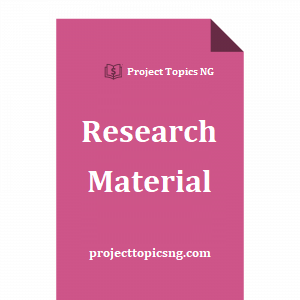Brief Introduction
According to Punkett (1979) accounting is the oldest profession. In fact, since prehistoric times families had to account for food and clothing to face the cold season. Later, as man began to trade, we established the concept of the value and developed a monetary system. Evidence of accounting records can be found in the Babylonian empire (4500bc) in pharaoh’s Egypt and in the code of Hammurabi (2250b.c). Eventually with the advent of taxation record-keeping became a necessity for the government to sustain social orders.
The Italian renaissance brought the artistic accomplishment of man to a new height. At this time Venice was the business cradle of Europe and it was here among merchants that double-entry accounting was invented and practiced.
However, auditing started when ownership was separated from administration. This was first seen in Ancient Greece where governmental accounting records (for the monarchs) were certified as true and fair only after a public hearing in which the accounts were read aloud to the hearing of the people based on whose response (i.e. either affirmation or denial) the monarch either affirm by saying “I hear” or reject by being silent.
Table of Content
Title page
Table of content
Abstract
CHAPTER ONE
1.0 Introduction
1.1 Background to the Study
1.2 Statement of Research Problem
1.3 Research Question
1.4 Research objective
1.5 Significance of the Study
1.6 Scope of the Study
1.7 Research Hypothesis
1.8 Limitation of the Study
1.9 Definition of terms
References
CHAPTER TWO
2.0 Introduction
2.1 Source Document
2.2 Bookkeeping
2.2.1 Single Entry
2.2.2 Double entry
2.3 Significance of Bookkeeping and Account
2.4 Books of Account
2.4.1 The Subsidiary Books
2.5 Financial Statement
2.6 Sources of Authority Guiding the Preparation
and Presentation of the Financial Statement
2.6.1 Generally Accepted Accounting Principles
2.6.2 Legislation
2.6.3 Disclosure Requirements of Company and
Allied Matters Decree (CAMD 1990)
2.6.4 Disclosure Requirement of Banking Decree
of 1991
2.6.5 Accounting standards
2.7 Users of Accounting Information and their
Information Needs
2.7.1 Investors group
2.7.2 Government
2.7.3 Creditors and suppliers
2.7.4 Management
2.7.5 Employees
2.7.6 Trade Union
2.7.7 The Public
2.8 The Attributes of an idea Financial Statement
2.8.1 Reliability
2.8.2 Verifiability
2.8.3 Representational Faithfulness
2.8.4 Neutrality
2.8.5 Secondary Decision Relevance Qualitative
Characteristics
2.8.5.1 Consistency
2.8.5.2 Comparability
2.9 Objectives of Financial Information
2.10 Merits of Financial Information
2.11 Limitation of Financial Information
2.12 Components of Financial Statement
2.12.1 The Statement of Accounting Policies
2.12.2 Balance Sheet
2.12.3 The Profit and Loss
2.12.4 Notes on the Accounts
2.12.5 Auditor’s Report
2.12.6 Director’s Report
2.12.7 The Statement of Value Added
2.12.8 Five Year Historical Summary
2.13 Statutory Frame Work of an Audit
2.14 Internal Control in an Organization
2.14.1 Types of Internal Control
2.14.2 Internal Control Weakness
2.15 Relationship between Management and
Auditors
2.16 Record Keeping and Internal Control a
Case of Akintola Willams Delloitte and
Cadbury Nigeria plc
2.16.1 External auditors Akintola Williams Delloitte
2.16.2 Issues involved in AWD
2.16.3 SEC final decision on Akintola Willams Delloitte
2.16.4 Audit lesson from AWD and Cadbury Plc
2.17 Relevance of Accounting Record-Keeping in
the Preparation of Financial Statement
2.18 Impact of Accounting Record Keeping in the performance of audit function
Reference
CHAPTER THREE
3.0 Research Methodology
3.1 Introduction
3.2 The Research Design
3.3 The Population
3.4 The Sample Size
3.5 The Sampling Techniques
3.6 Source of Data
3.7 Method of Data Analysis
3.8 Measurement of Data
Reference
CHAPTER FOUR
4.0 Introduction
4.1 Data Presentation and Analysis
4.2 Percentage analysis
4.3 Hypothesis testing
4.3.1 Hypothesis one
4.3.2 Hypothesis two
CHAPTER FIVE
5.0 Summary, Recommendation and Conclusion
5.1 Summary of findings
5.2 Recommendation
5.3 Conclusion
Bibliography
Appendix


